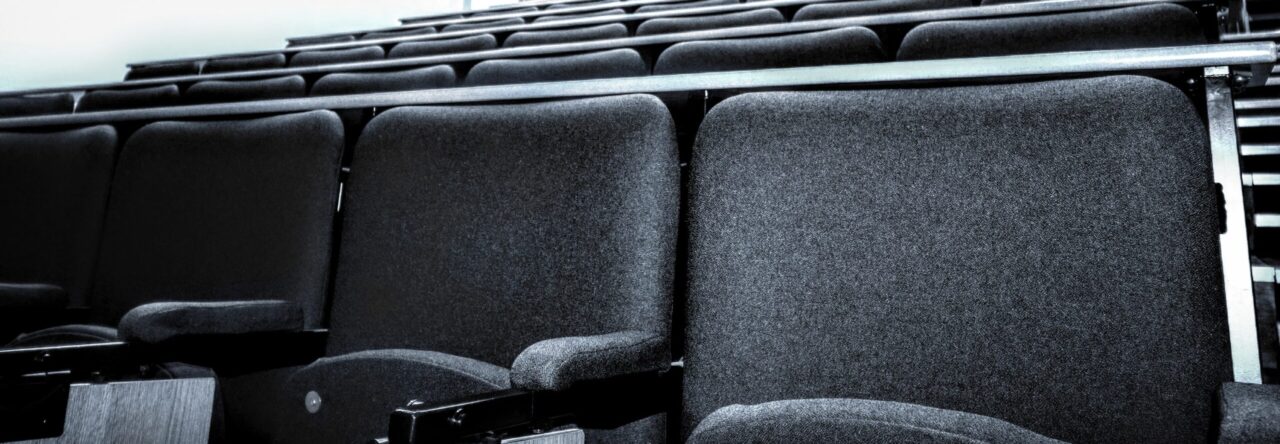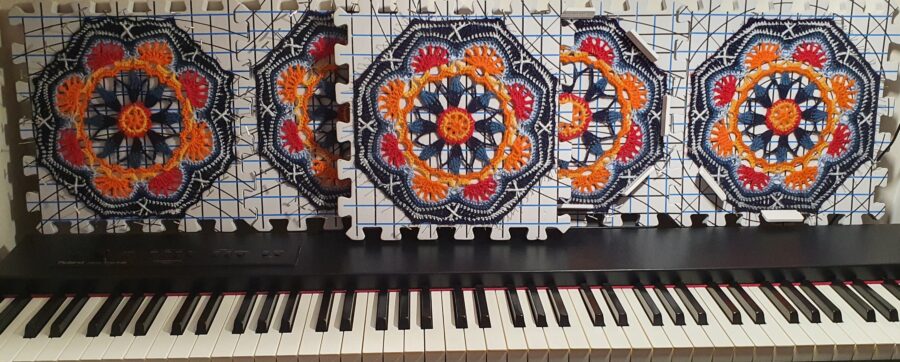I’ve spent the day with a background of mental visualisations. Abstract images of stitching, sewing, crotcheting, knitting. Of material workmanship in progress – productive incremental actions. The imagery involves a sensation in my fingers and the palms of my hands. Tingling imagination of the warm, abrasive itch of wool, of pinching and grasping and moving yarn and threads, manipulating needles and tools, of bringing stitches and loops together from sides to middle, sides to middle, turning in and outside and yielding comforting new breadths and lengths of fabric.
The imagery emerged after I read a discussion thread this morning. Among some musicians who teach University courses in composition, who were identifying and discussing the dilemma they routinely encounter in the admissions and pedagogic process. The dilemma is to do with the deep divide between experience and expertise in musical notation practices amongst prospective students. The discussants described witnessing a debilitating lag in skills for those seeking access to musical composition programmes who did not have fluent, sophisticated literacy skills from working with musical scores already for many years and as a fundamental, performative aspect of their musical lives. The conversation in the thread recognised that the means by which applicants attain such skills were almost exclusively tied to both cultural and financial capital. Yet the need for musical composition pedagogy and professional practice to be based in music notational literacy was – for the majority of contributors – an indisputable priority: How, one discussant asked, would applicants with less experience and fluency in reading and writing musical scores ever ‘catch up’?
Another contributor began circumspectly to question the musical conservatory in its entirety: Having noticed that ‘luckily, conservatories are not the gatekeepers of music’, then ‘letting [more] people in’ to conservatories is something that would concern the contributor a lot more should the conservatory itself offer something of value to students whose interests (and experience) lay with ‘say, non-notated music’.
Hmm. Having composed the post and pressed ‘Send’, I wonder whether the contributor might then have paused, halfway to a confusing revelation.
For sure, conservatories don’t have control over human musical creativity. These institutions can’t assert authority over new practices, new genres, new sounds and performances and artistic output. They can’t start or stop people from engaging with music, and in everyday life most of that happens a million miles away from scored, notated music practices. But given that: what’s to be gained from this acceptance and complicity in systems of institutional prestige – purported quality and standards – that operate through exclusion?
The thread mirrored so many conversations I’ve been party to, that I’m still working through, and that I’ve challenged without resolution. But why did all this bring me to that quiet mental yearning for the experience of a crafting process? Sides to middle, sides to middle, inside to outside…
Why did it bring on the vivid, tacit internal vision and sensation of crafting? Of working-with? Of sides-to-middle, inside-outside transformation and growth?
Perhaps because this is the process that I want teaching to be: working with, not working on. Transforming and creating through process. Making, not judging.

